These two stories were the major ones today. Just the hope of a cure for the COVID-19 coronavirus sent the Dow to a close up more than 700 points, despite that the manufacturer of the hoped-for cure, Gilead, indicated that data is not yet sufficient to expect a cure.
Friday, April 17, 2020
Stocks Soar On Nothing But Hope
Sunday, January 15, 2012
Bill Hester: Five Risks to the Global Economy in 2012
As we're all a bit forecast weary by this point in the year, here's a list - not of prognostications - but rather of potential risks that may come into even greater focus this year. These risks – whether they intensify or pass – will likely play an important role in driving the performance of global stock markets in 2012.
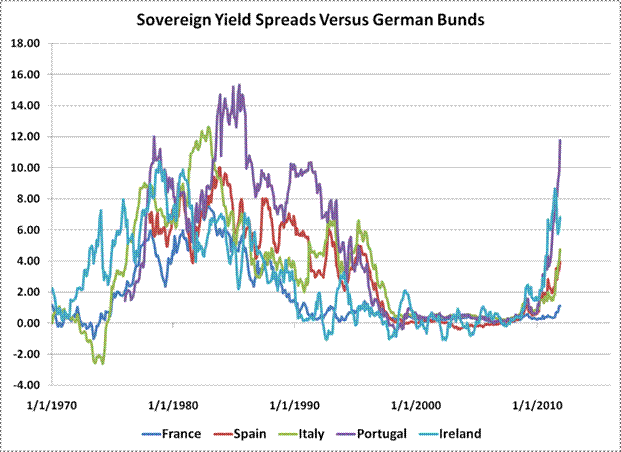
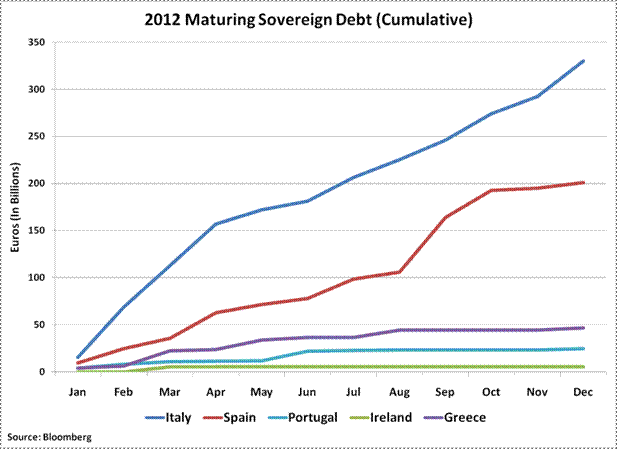
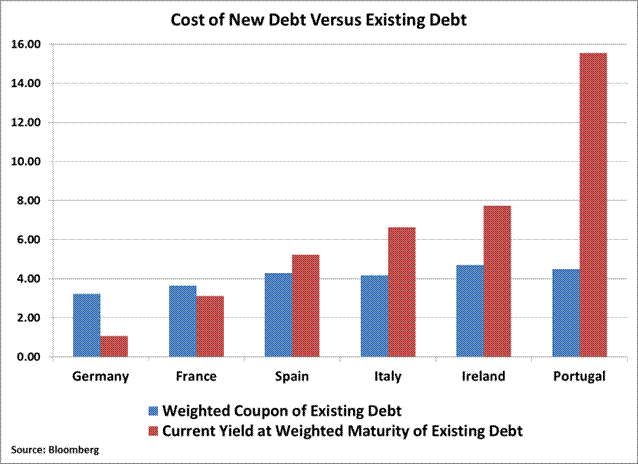
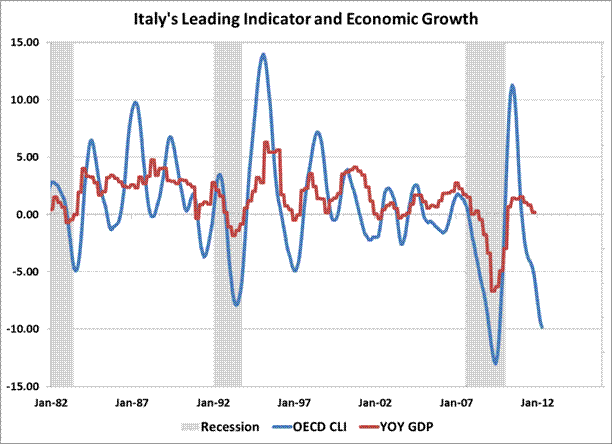
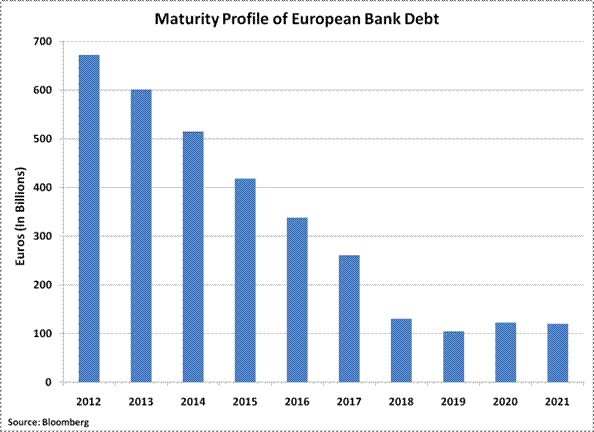
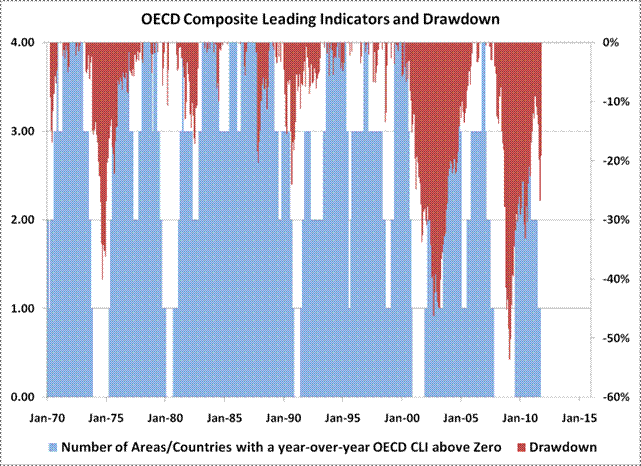
Tuesday, November 1, 2011
Hussman on Leading Vs. Lagging Economic Data
Accompanying the news of the "grand and comprehensive" European solution on Thursday was the news that GDP rose at an annual rate of 2.5% in the third quarter. There was already coincident data that the U.S. was not yet in contraction in August or September, so this was no surprise. Still, investors continued the habit of confusing lagging and coincident indicators for leading ones, so the positive GDP figure was taken as evidence that an oncoming economic downturn was "off the table."
Friday, September 23, 2011
Leading Economic Indicators Remain Weak
from Econompic blog:
While leading economic indicators expanded 0.3% during August, the expansion remains focused on areas controlled by monetary policy rather than the underlying economy. For the third month in a row (and four of the past five), indicators outside the Fed's control were negative.

Thursday, May 19, 2011
Explanation from Goldman Sachs on Today's Dour Economic Data
I find it interesting that they blame Japan's woes for the Philly drop, but admit that they have no data to back it up. This brings to five the plethora of bad economic news today. I'm amazed that the Dow isn't down 200 points!
Goldman Sachs on today's bad economic data:
1. The Philadelphia Fed's monthly manufacturing survey weakened sharply for the second month in a row. The headline index of "general business activity" fell to 3.9, from 18.5 in April and 43.4 in March. This still suggests factory sector growth, but only barely. Most of the detailed activity indexes also weakened - the new orders index fell to 5.4 from 18.8, the shipments index to 6.5 from 29.1, and the unfilled orders index to -7.8 from 12.9 - with the exception of employment, which rose to 22.1 from 12.3 in April. (We have no information on how much of the drop in the Philly survey over the past two months could have been related to supply chain issues associated with the Japanese earthquake, but this is not a region with an especially high concentration of vehicle manufacturing.) Price pressures eased a little but remain high in historical terms.
2. Existing home sales declined by 0.8% mom in April to an annualized rate of 5.05 million units. Consensus forecasts had expected a moderate increase. Home sales dropped in three of the four Census regions during the month, with the largest declines in the Northeast. The number of homes currently offered for sales was about unchanged after seasonal adjustment, at about 3.7 million units (the months supply of homes increased, but this was likely due to seasonal variation). The median sales price of existing homes increased by about 0.5% mom on a seasonally-adjusted basis-an encouraging turn after several months of weakness. Existing home sales prices are down 5% year-over-year.
3. Rounding out the weaker-than-expected data, the index of leading economic indicators fell by 0.3% mom in April. The consensus had expected a 0.1% inc
Sunday, September 19, 2010
John Hussman: Leading, Lagging, and Coincident Indicators
from HussmanFunds:
"Series that represent early stages of production and investment processes (new orders for durable goods, housing starts, or permits) lead series that represent late stages (finished output, investment expenditures). Under uncertainty, less binding decisions are taken first. For example, hours of work are lengthened (shortened) before the work force is altered by new hirings (layoffs)."
Journal of Business, 1982
Friday, September 3, 2010
David Rosenberg Points Out Something Fishy With Latest Economic Data
The latest batch of data has been highly confusing, to say the least. The chain store sales data were skewed by one-offs, such as retroactive jobless benefit checks that were mailed out in early August and the growing number (17 this year) of States offering sales tax holidays. We estimate that absent these influences, year-on-year sales growth would have been closer to 1% than 3%.
The spending data also belied the information contained in the Conference Board’s consumer confidence survey, as the facts-on-the ground ‘present situation’ index sagged to 24.9 in August from 26.4 in July — only 5% of the time in the past has it been so low. The ISM manufacturing index, which really got the ball rolling on this ‘take out the double-dip’ trade, managed to spike even though the three leading sub-indices — new orders, backlogs and vendor performance — all declined in what was a 1-in-100 event.
Not only that, but the employment component of the ISM surged to its highest level since December 1983, and yet the manufacturing employment segment of the payroll survey fell 27,000 — the first decline this year and the sharpest falloff since last October. Furthermore, the manufacturing diffusion index slumped to a seven-month low of 47 from 53 — in other words, fewer than half of the industrial sector was adding to staff requirements last month. It begs the question as to what exactly the ISM is measuring.
The list of inconsistencies in the data didn’t stop there. The entire increase in private sector employment in August was in the service sector — mostly health and education, which says little about the cyclical state of the economy. Yet 90 minutes after the jobs number was released, we got the ISM non-manufacturing survey and it flashed a contraction in services employment to a seven-month low of 48.2 from 50.9 in July.
Just a tad confusing, but the newly found bullish view of the economy is sort of corroborating evidence.
The employment report did not detract from the view that the economy is losing steam. The fourth quarter of a recovery typically sees real GDP growth of over 6% at an annual rate, but in this post-bubble credit collapse, what we got this time was 1.6% at an annual rate in Q2.
Moreover, there is nothing in the data to suggest anything but a further slowing in Q3, and the only reason why there is no contraction this quarter is because it looks as though we are getting another lift from inventories — though now the buildup looks involuntary, which will cast a cloud on fourth-quarter GDP barring a sudden reversal in the declining trend in real final sales.
Private payrolls were +247,000 when the equity market peaked in April, it slowed to +107,000 by July and was +67,000 last month. What does that suggest about the trend? Ditto for goods-producing employment, which was +67,000 in April, subsequently softened to +37,000 by July, and in August was the grand total of zero.
One can easily draw the conclusion from the data that we have dodged a bullet. But that does not mean we are out of the woods. Employment is a coincident indicator. Leading indicators, such as the ECRI, continue to deteriorate and to levels still consistent with nontrivial double-dip risks. Keep this in mind — private payrolls came in at +97,000 in November 2007 and the “Great Recession” began the next month. In other words, the +67,000 tally we saw today basically tells you nothing about how the pace of economic activity is going to unfold as we move into the fall.
Wednesday, July 7, 2010
Another Leading Indicator: Rock Concert Cancelations
from Rolling Stone:
The worst-selling summer concert season in recent memory has claimed another victim — Lilith Fair, which on Thursday canceled 10 shows, adding to a grim list that includes U2, Christina Aguilera, Limp Bizkit, Simon & Garfunkel, certain Eagles stadium dates and Rihanna's tour opener originally scheduled for tonight. "It's the reality of this summer," says Terry McBride, Lilith Fair's co-founder. "It's just across the board. Main Street is still in recession. We're not out of this yet. Did we see that four months ago? I don't think anyone did."
Monday, April 20, 2009
Leading Indicators Leading LOWER!
from Marketwatch:
The index of leading economic indicators fell 0.3% in March, following an upwardly revised dip of 0.2% in February. Building permits were the largest negative contributor in March, while the real money supply was the largest positive contributor. "There have been some intermittent signs of improvement in the economy in April, but the leading economic index and most of its components are still pointing down," said Ken Goldstein, economist at the Conference Board. Overall, six of the 10 indicators were negative contributors, three were positive, and one was steady.It is not coincidental that the only indicators pointing higher are the ones the government manipulates -- like money supply!
Thursday, March 19, 2009
Leading Indicators Down .4%
 The indicators that point to the direction of the U.S. economy 6-9 months down the road are pointing down for that time frame. This is particularly stunning given that some of these indicators are influenced by monetary expansion by the Fed, and these are inevitably pointing higher. The fact that the rest of the are pointing not only down, but much lower, is dragging the stock market down today.
The indicators that point to the direction of the U.S. economy 6-9 months down the road are pointing down for that time frame. This is particularly stunning given that some of these indicators are influenced by monetary expansion by the Fed, and these are inevitably pointing higher. The fact that the rest of the are pointing not only down, but much lower, is dragging the stock market down today.Thursday, February 19, 2009
Perspective on Today's Positive LEI News
Marketwatch has the following article on why today's positive LEI was a head fake:
The LEI is a useful tool, but right now it's flashing a false sign of hope. The indicators that track the real economy are still falling, while most of the indicators that track the financial system are improving.Despite what the indicators say, no one believes the financial system is actually improving in any meaningful way. Most of the improvement in the LEI in the past two months has been due to the massive expansion of the money supply engineered by the Federal Reserve. It's been rising at an 18% annual rate...
The LEI is an index of hope, not reality.
And I thought we had some good news today!
Some Good News -- Leading Indicators Looking Better
From Bloomberg:
The Conference Board’s gauge rose 0.4 percent, the most since December 2006, after a revised 0.2 percent increase this past December, the New York-based group said today. The index is designed to show the likely direction of the economy over the next three to six months.


